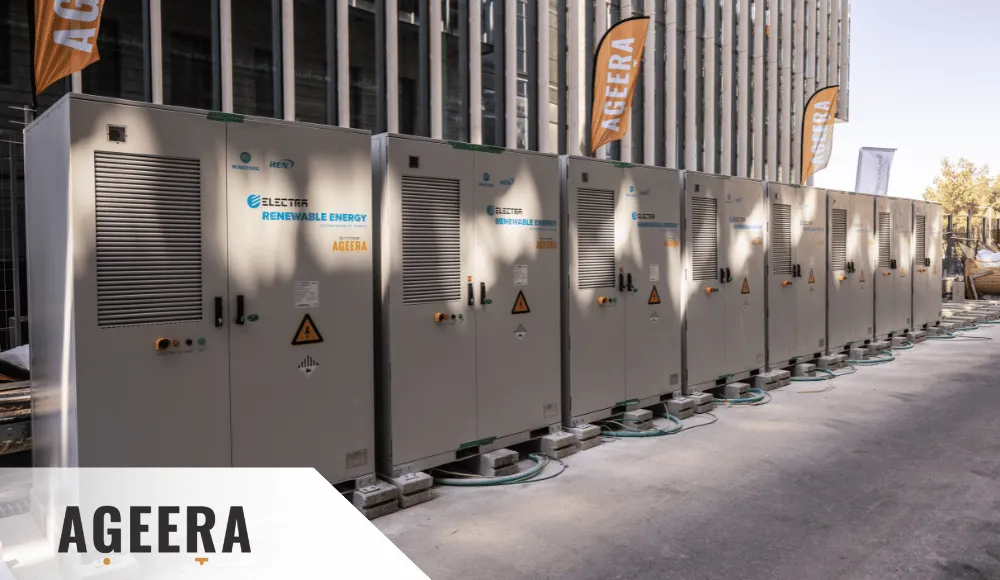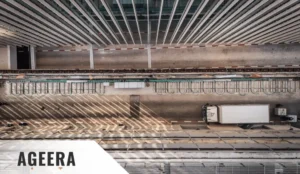Energy Resilience for Data Centers: Why Battery Storage Is Now Essential
Modern data centers are the backbone of the digital economy — powering everything from financial systems and healthcare platforms to cloud services and AI computing. But as power demand skyrockets, so do risks. Voltage drops, grid instability, and unexpected outages can cause catastrophic downtime. To stay competitive, today’s data centers are turning to advanced energy storage solutions. AGEERA is leading this transformation with smart, AI-driven battery storage systems designed for resilience, reliability, and revenue generation.
Why Energy Resilience Matters More Than Ever
Data centers require constant, uninterrupted electricity. Even a few seconds of power loss can disrupt servers, corrupt data, and impact millions of users worldwide. Traditional backup systems — diesel generators or UPS batteries — are costly, polluting, and limited in duration. As demand for clean and continuous power grows, energy storage has become the smarter, more sustainable alternative.
AGEERA’s Battery Energy Storage System (BESS) platform gives data centers total energy autonomy, enabling them to store excess power, manage peak loads, and maintain seamless operations even when the grid fails.
The Challenge: Rising Demand Meets Unstable Supply
Global internet traffic and AI workloads are pushing electricity use to record highs. At the same time, renewable integration is making grid supply more variable. Power quality issues — including fluctuations in voltage and frequency — can damage sensitive IT equipment and cause unplanned outages. Without an advanced energy strategy, data centers risk becoming both financially and operationally vulnerable.
That’s why many facilities are investing in on-site storage as a central pillar of their energy architecture. By combining batteries with advanced control software, they achieve a new level of reliability and flexibility that traditional infrastructure can’t match.
How Battery Storage Supports Data Center Operations
Battery storage systems like those provided by AGEERA operate far beyond the role of backup power. They deliver value every hour of every day by intelligently managing energy flows. Through AGEERA’s integrated EMS and VPP architecture, data centers can:
- Stabilize voltage and frequency: Smooth fluctuations that affect sensitive computing and cooling systems.
- Reduce peak demand charges: Discharge stored power during tariff spikes to lower electricity costs.
- Enable islanding during outages: Keep servers running independently of the grid.
- Support sustainability goals: Store solar or renewable energy for clean operations.
- Earn revenue through flexibility: Participate in grid services and demand response programs.
AGEERA’s Approach: Beyond Backup
AGEERA’s technology is designed specifically for mission-critical facilities. Its BESS management platform connects directly with on-site systems — cooling, UPS, generators, and renewables — and optimizes them through AI and automation. The software predicts usage patterns, monitors grid conditions, and reacts instantly to fluctuations, ensuring stable operation 24/7.
This system doesn’t just protect data centers from outages — it actively turns energy into an asset. Stored energy can be sold or shared via Virtual Power Plant (VPP) participation, turning excess capacity into additional income while strengthening the overall grid.
Case in Point: The Sherman Data Center Project
At the Sherman Data Center, AGEERA implemented a high-capacity microgrid that combines battery storage, real-time controls, and predictive analytics. The result: improved reliability, reduced operational costs, and complete energy visibility. The site can now manage load shifting, instant failover, and autonomous operation in case of grid outages — all without compromising performance.
This kind of project showcases the future of mission-critical power management — intelligent, secure, and sustainable.
Financial Impact and ROI
Energy resilience doesn’t just prevent losses — it adds measurable value. For most data centers, electricity costs represent up to 40% of operating expenses. By integrating battery storage, facilities can reduce these costs through peak shaving, energy arbitrage, and renewable optimization. Many AGEERA clients see a return on investment within three to five years, with ongoing profitability beyond that period.
Moreover, joining a VPP allows data centers to earn from ancillary services like frequency regulation and reactive power support, creating a dual financial and operational advantage.
Security and Compliance by Design
In a sector where data security is paramount, system protection is non-negotiable. AGEERA’s platform is built with multi-layered cybersecurity, encrypted communication, and local fail-safe controls. Each site maintains operational independence — even if external communication is lost — ensuring continuity at all times. This aligns with international standards for critical infrastructure security and uptime.
Environmental Advantages
Data centers are under pressure to reduce their carbon footprint. Battery storage supports these efforts by replacing or minimizing diesel generation and improving renewable utilization. By capturing excess solar power or off-peak electricity, facilities can run cleaner without sacrificing reliability. Many AGEERA clients report significant improvements in ESG metrics after adopting smart storage systems.
The Future of Data Center Energy
The next generation of data centers will be more than energy consumers — they will be energy participants. As AI workloads continue to grow and sustainability targets tighten, the ability to manage, store, and trade power will define the leaders of tomorrow’s digital infrastructure. AGEERA is already enabling this shift through scalable, intelligent systems that unite efficiency, resilience, and profitability.
Frequently Asked Questions
Can battery systems fully replace diesel generators?
In many cases, yes. Modern BESS solutions can provide both short- and medium-term backup, reducing or eliminating the need for diesel-based systems.
How much space does a BESS installation require?
It depends on the energy capacity needed, but AGEERA designs modular systems that fit into existing facilities or adjacent technical areas.
Can storage integrate with existing UPS systems?
Absolutely. The EMS is designed for seamless integration with UPS and generator infrastructure, improving overall efficiency and reliability.
Is this only for large-scale data centers?
Not at all. AGEERA’s solutions are scalable, serving both hyperscale and edge data centers across various power capacities.
How long is the installation process?
Typical projects — from design to commissioning — take about six months, depending on complexity and system size.
Summary
Power continuity is no longer a luxury for data centers — it’s an operational necessity. With AGEERA’s advanced battery storage systems, facilities gain control, stability, and profitability in one integrated solution. Learn more about the AGEERA platform or explore real-world projects that prove how smart energy resilience is shaping the digital world.






